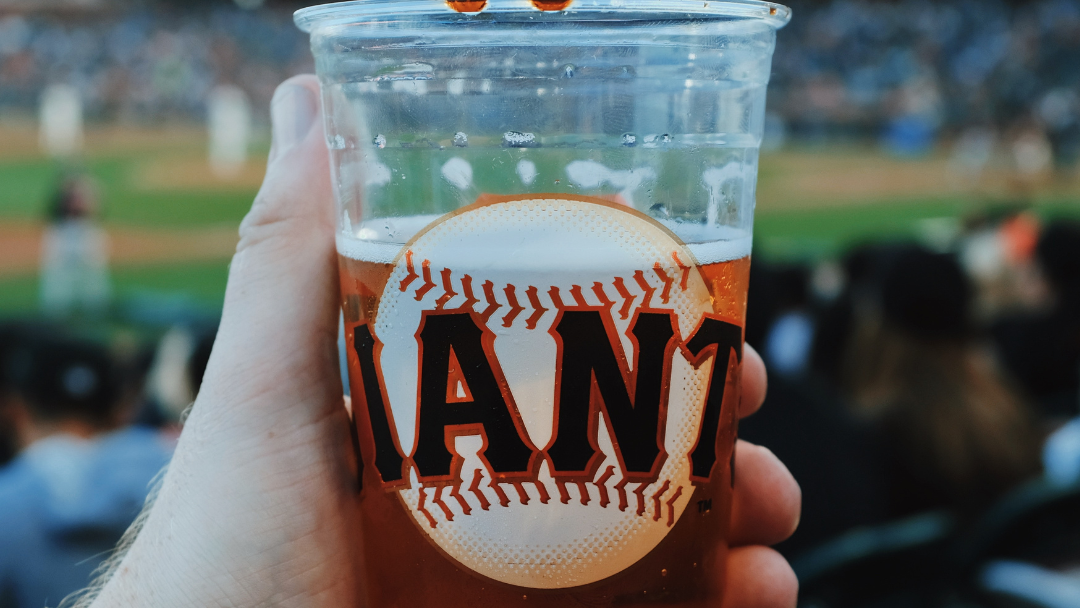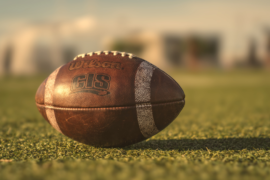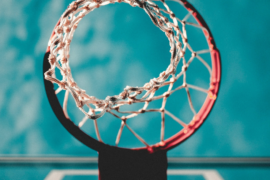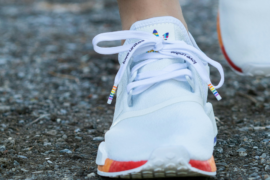I cannot help but associate baseball with beer, an association ironically brewed through the sense of smell rather than taste.
Beer became baseball’s bridegroom after the Civil War. German brewers established inland baseball franchises that changed the prevailing attitude of the Eastern seaboard’s National League owners about the compatibility of suds and baseball, the game itself finding its way into the heart of American life through its sensory appeal.
In urban ballparks, traditional sights, sounds, touches, and smells historically conjured what Eric Solomon called “pastoral familiarity,” particularly among immigrants. The new owners added the taste of beer to complete the sensory awareness that captivated recent 19th Century baseball fans.
Thomas Wolfe noted wooden bats, leather balls and gloves, and an expanse of grass spoke to a shared experience with the land that many new Americans had left behind. Going to ballgames viscerally connected fans through senses and memories to the frontier experience that grounded America’s and baseball’s culture.
Playing baseball growing up in 1950’s San Francisco initially appealed to three of my senses. Smell coming in from the bullpen, foreshadowing taste, stimulated one more sensory trigger to embrace the national pastime.
As a youngster, I loved the sight of baseball diamonds, their symmetry the antithesis of asymmetrical outfields replicating the irregularity of America’s myriad of changing frontier venues encircling vibrant, regulated settlements.
My Eureka Valley Playground home field, aptly flanked by Diamond Street, featured a short leftfield abutting my elementary school’s cement playground. It spread to vast expanses, almost four hundred feet away in center and right.
I appreciated baseball sounds, particularly a ball being hammered by my Louisville Slugger or thumping into my mitt’s pocket. The chatter of teammates (“Hey batter, batter”), umpire pitch calls, and parental buzz from the stands also became familiar.
I treasured the touch of my late-1950’s C.Y.O. flannel pinstriped unform, modeled after dynastic Yankee unis worn by great Bay Area stars through the years, including Joe DiMaggio, a shortstop when my dad played against him in 1930’s semi-pro games. The feel of a baseball’s 216 red seams and the texture of resin rubbed bats and balls also invited tactile exploration.
And, of course, I cherished typical baseball smells, including the smell of newly mowed grass when maintenance men occasionally got around to “major leaguing” our field or the smell of the glove oil I rubbed on my Harvey Kuenn Ball Hawk glove.
Beer’s been a constant in life. A memory of my Austrian maternal grandmother lingers. She often boiled sausages in beer on her Wedgewood stove, permeating her small house with intoxicating aromas.
It was my olfactory organs, teasing the sense of taste, that sealed my sensory association between beer and baseball, even before first imbibing beyond a dinner table sip.
The minor league San Francisco Seals played baseball at a gem of a stadium not far from my house in what was then called the city’s Eureka Valley but is now most recognizable as the Castro. Seals Stadium, with an imposingly tall centerfield wall, held 23,000 fans. It became the home of the transplanted Giants during their first two seasons before their dump of a stadium at Candlestick Point got foisted upon fans in 1960.
My dad knew Jerry Donovan, a Seals’ exec in 1957, the franchise’s last P.C.L. year and then a Red Sox affiliate. He got us into the locker room after the club’s final game as the team celebrated a last championship. The players, in their twenties and thirties, seemed ancient. I expected my hero worshipping eyes and ears to be primary receptacles of memory, but it was the smell, a heady combination of beer and sweat steamed by showers, that struck my senses impactfully.
That experience, however, proved a mere harbinger of my most telling aromatic baseball experience. As a ten-year old, I played a Park and Rec game at Seals Stadium. Having attended countless Seals and Giants’ games there, I already knew and embraced the 16th and Bryant Street stadium’s most distinctive feature.
It sat adjacent to a mammoth Hamm’s Brewery, rising above the rim of the stands behind home plate with a huge, lit, foam-topped beer glass ascending skyward like a majestic Willie McCovey home run. And when a game, night or day, fell during a brewing run, you might as well have been inside the brewery.
I’m not sure how pitchers concentrated on their deliveries or batters on fastballs buzzing home plate what with the wonderful wafting aroma pushed across the street by a ubiquitous San Francisco breeze. Did that account for the called third strike I took on a full count during my last plate appearance in my 1959 game at a major league ballpark?
After witnessing my first San Francisco World Series game with my father a couple years later (1962’s game six), I attended San Francisco Series games in 1989 (game four after the quake) and 2002 (three games in total). Losing literally tasted horrible for over a half a decade.
The Giants, however, ended a 52-year S.F. drought by winning the 2010 World Series. The taste of a long-awaited victory happily drove me to drink, after first taking care of a wondrous responsibility.
A school principal at Sacred Heart Cathedral Prep near the Civic Center culmination of the victory parade (the same school from which I had played hooky to attend the ’62 game), I dismissed 1300 students early to attend the Giants’ victory parade.
At its conclusion, I enjoyed a celebratory Guinness at Harrington’s near school with a former student. Kilian, who, with his Hollywood connections and living in SoCal, had gotten my wife and me 2002 7th game World Series tickets. With him in Anaheim, we had watched the Giants fall ingloriously to the Angels after our 350-mile car trek necessitated by my heroes coughing up game six late.
With all that, my 2010 celebratory pint had to be one of the best tastes of baseball I’ve ever enjoyed. In my memory, I can still smell it.
DR. KEN HOGARTY, who lives in SF’s East Bay with his wife Sally, retired after a 46-year career as a high school teacher and principal. Since, he has had stories, essays, memoirs, and comedy pieces published in Underwood, Sport Literate, Under Review, Sequoia Speaks, Woman’s Way, Purpled Nails, Cobalt, the S.F. Chronicle, McQueen’s, Points in Case, Glossy News, The Satirist, and Good Old Days.
Like what you’re reading?
Get new stories, sports musings, or book reviews sent to your inbox. Drop your email below to start >>>
NEW book release
Ghosts Caught on Film by Barrett Bowlin. Order the book of which Dan Chaon says “is a thrilling first collection that marks a beginning for a major talent.”
GET THE BOOK



